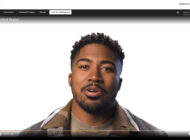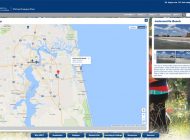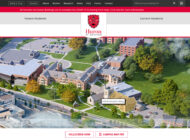Virtual Tours Go International
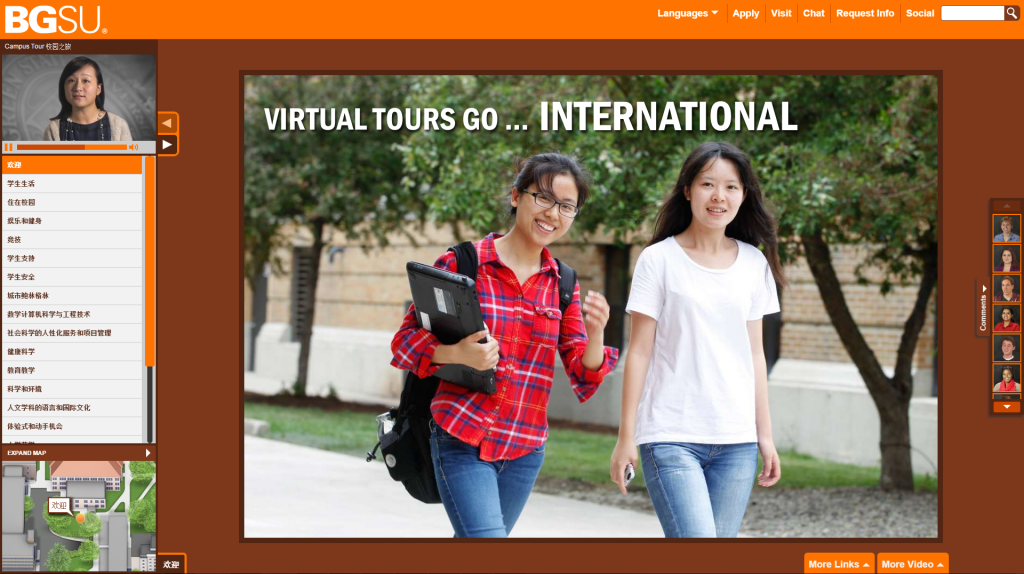
Bowling Green State University Chinese WalkingTour
Just a few years ago academic Web sites were usually presented in one language with only peripheral attempts made to accommodate foreign-language speaking audiences. Today schools are increasingly adopting new approaches to get their messages into the hands of students from far-flung countries, and a sizable number are developing virtual tours in multiple languages to appeal to an increasingly diverse applicant pool.
The Rise of International
As the aspiration for a college education has become a global phenomenon, U.S. colleges and universities are coping with an unprecedented surge in international applicants and students. According to The Wall Street Journal, there are nearly 50% more international students in the United States since 2010, and more than 85% more than there were in 2005! As state support for academic institutions dwindles and costs continue to rise, foreign students, who tend to pay a higher portion of tuition than their American counterparts, are being increasingly courted by colleges and universities. Some officials have even gone so far as to suggest that foreign students are subsidizing the lower tuition paid by U.S. students.
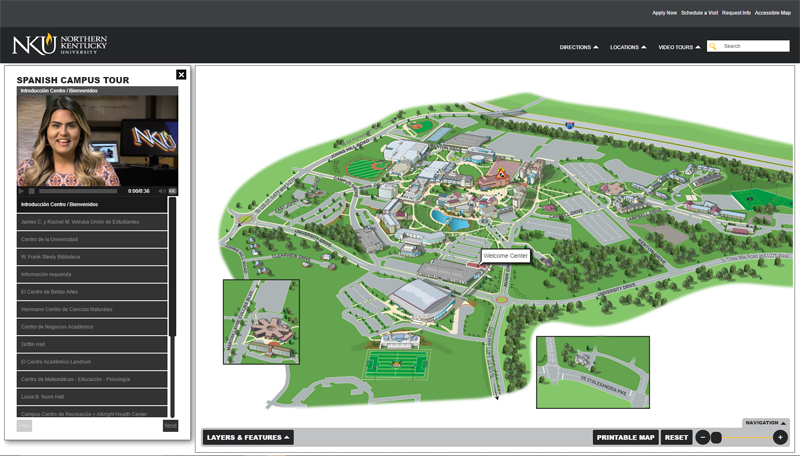
Northern Kentucky University AnyMap with Guided Spanish Video Tours
The Importance of the Virtual Tour for International Applicants
While the importance of a virtual campus tour has become increasingly accepted for domestic students, the role of the virtual tour is nearly essential in courting international students. Most international students do not travel to the United State for extensive college visits and interviews, and so their understanding of the culture and identity of particular American institutions is gleaned primarily through word of mouth, official university materials and the .edu Web site.
CampusTours surveys have found that while a slight majority of international students choose to take the English-language virtual tour, the vast majority of international applicant parents take the tour in their own language (when offered) because they are presumably less comfortable with English. For these parents, the virtual tour is especially important, as it may be the only guided presentation they are likely to view from the institution.
Best Practices for Foreign Language Tours
CampusTours has helped quite a few schools to develop foreign-language tours for their international audiences. Our experiences have led to some preliminary best practices for foreign language tours:
- Obtain official translations of all your tour stops, scripts etc, and do NOT use Google Translate as it tends to make rudimentary mistakes that undermine your international efforts
- Use real foreign language speaking video guides and not simply foreign close-captioning or audio-only solutions that leave international audiences with a second-rate presentation
- Translate the text of the tour stops, any stop text and stop locations on the map into the foreign language to provide a comprehensive (and usable) solution
- Consider creating a special stop on the tour for International Students to discuss the specifics of applications from foreign countries (special deadlines, remote interviews, TOEFL requirements, etc.)
- Update the visual content of your foreign language tour(s) to reflect more international diversity
- Highlight campus safety, tutoring, mentoring, campus police and the student support network, recognizing that you are speaking to parents that will be sending their children across the world to attend school
- Be willing to alter the tour route on the international tour to highlight different things than are highlighted on your English language tour
- Some languages read from right to left (Arabic, etc) and will require additional customization to your tour interface
Is your institution considering expanding your virtual tour presence for international visitors? Let us know in the Comments section below.

